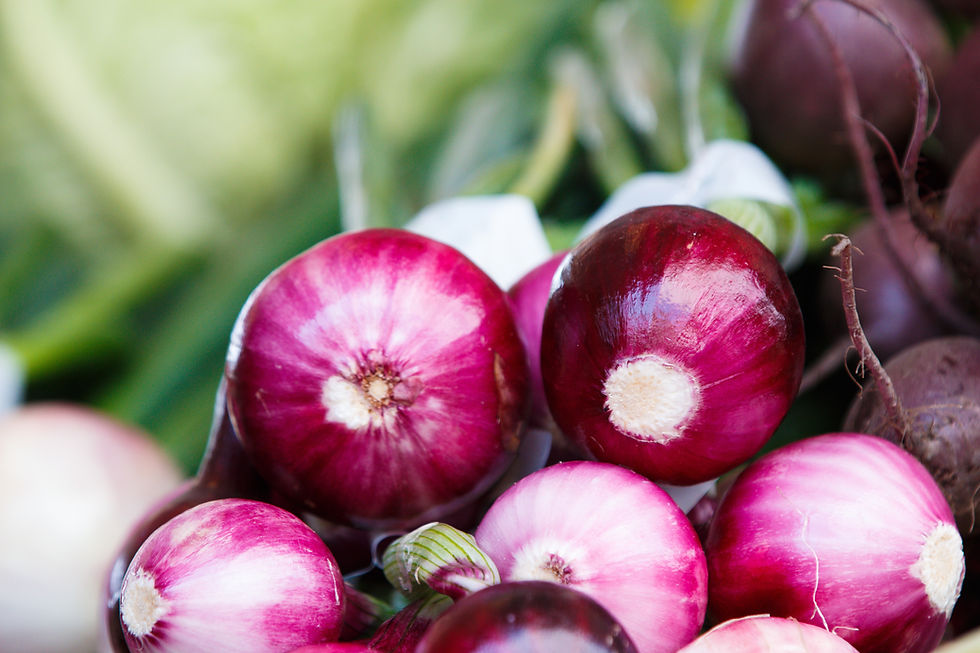
Subreddit: r/AskCulinary
User: u/llttww83
Link: https://www.reddit.com/r/AskCulinary/comments/1i0q4d2/why_are_alliums_onions_leeks_garlic_scallions/
Original Post:
Why are alliums (onions, leeks, garlic, scallions) used in savory recipes in cuisines all over the world?
It's obviously an important ingredient in building appealing savory flavor since it is used universally -- across cultures and and cuisines. But what, exactly, does it provide? What, chemically, is happening? Allium in oil isn't sweet, bitter, or umami... but of course it is delicious. My favorite smell in the world is onions being sauteed in butter.
My Response:
Hi there, I'm a food scientist who studied Alliums as the topic of my dissertation.
Warning: Be prepared for the massive wall of text that is incoming. After five years of research, I have a lot to say on this topic!
One class of compounds found in garlic and onion are amino acid derivatives called cysteine sulfoxides. They're fairly basic structurally, where in the cysteine molecule, the sulfur group is attached to some small substituent - a one to three carbon side group. They are responsible for the pungency produced when you damage or slice the tissue of these vegetables.
Essentially, cysteine sulfoxides live in certain compartments in the tissue, whereas an enzyme that acts on these amino acids, is found in another compartment. When they combine, they produce a compound called a sulfenic acid. In garlic, this quickly dimerizes into a thiosulfinate, and the main one that forms in garlic is called allicin. In onion, the sulfenic acid doesn't have time to dimerize because a second enzyme convers the sulfenic acid into the compound that causes your eyes to tear up.
All of this is to say that these cysteine sulfoxides are critical for a lot of the defense systems that onions and garlic and other Alliums put up to protect against herbivores, pests, and microbes, as thiosulfinates are incredibly effective against them (think in terms of the toxicity that garlic and onion has on dogs, for example, or the ability of garlic to fight bacterial infections).

Anyway, so these cysteine sulfoxides have a very interesting property that is almost unheard of in the plant kingdom. It turns out that cysteine sulfoxides impact one particular taste known as kokumi - very similar to umami, except that kokumi is more about the amplitude, duration, and peak of savory flavor intensity. So it's more a qualitative amplifier, rather than a taste or perception on its own. Kokumi compounds can make savory foods very delicious by smoothing out the ups and downs of flavors, and extending their effect for a longer experience.
The most well-known and potent kokumi compound is glutathione, and it is found mostly in meat. Glutathione is also found in yeast extract. Several kokumi compounds are found in cheese due to the fermentation and breakdown of milk protein into peptides that give kokumi.
But only onions and garlic contain cysteine sulfoxides, and kokumi receptors also respond to these. And they're the most abundant kokumi compound that you can find in all fruit and vegetable tissues. Glutathione is extremely rare in the vegetable kingdom because it's not as essential for functioning as it is for animals - glutathione is an antioxidant that's involved in scavenging the oxygen radicals formed during metabolic respiration through mitochondria, which plants do not have.
The other essential part of the equation is that amino acids undergo what is known as the Maillard reaction during cooking and heating after reacting with sugars like glucose and fructose. And cysteine sulfoxides can go through the Maillard reaction in a very particular way, because they contain sulfur atoms in their make-up. The only way to get high-intensity savory flavors is through the presence of sulfur, and garlic and onion are some of the few plant materials that accumulate a tremendous amount of sulfur. Sulfur incorporation into for example, ribonucleotides, through the Maillard reaction results in extremely high intensity umami compounds - while normally ribonucleotides can amplify umami intensity by 7 to 15 times, a sulfur-containing ribonucleotide can have upwards to 55X the umami amplification.

The chemistry is quite remarkable in that it's very simple - if you have an amino acid, a sugar, a ribonucleotide, and a source of sulfur, and heat it all up, you can jam a sulfur atom into the ribonucleotide. I speculate that is one of the reasons why very specific combinations have arisen from cooking over millenia, and that there is actually a very small subset of ingredient combinations that can exist that are actually tasty to humans. Read more here on The Human Flavorome Project.
So garlic and onions are very unique, as is really any Allium, in their ability to create great flavor in savory foods.
Are you working on a new food or beverage product? Interested in working with me and my team to get started?
Click on the button below to get in touch and set up a meeting today!